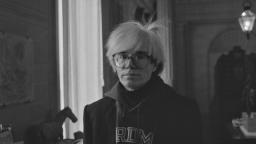
(CNN)Andy Warhol was such a distinctive figure – across the worlds of art, media and pop culture – that a docuseries about his life could hardly be boring, and The Andy Warhol Diaries is not. But this six-part Netflix production unfolds at a sluggish, almost hypnotic pace while using AI technology to generate Warhol’s voice reading his words from the great afterlife, which is as oddly creepy as it sounds.
Warhol would likely embrace the idea of extending his 15+ minute fame, and the project – directed by Andrew Rossi and produced by the prolific Ryan Murphy – certainly does. While the quote “Everyone will be world famous for 15 minutes” may have been misattributed to the artist, “Diaries” adds Warhol’s tally to 395 minutes, as most episodes last longer than an hour, whatever that’s worth.
Rossi uses the posthumously published diaries as the program’s narrative backbone as he flies about in a manner that depicts the chaotic times Warhol lived, the lives he touched, and the various contradictions associated with him.
Warhol, spanning cultural spheres, might popularize Campbell’s soup cans or befriend and champion talents like Jean-Michel Basquiat (the subject of an entire episode); produce cutting-edge films and groundbreaking videos for a then-burgeoning MTV; and still make incongruous guest appearances on mainstream vehicles like “Love Boat” and “Saturday Night Live.”
Few figures have had such a reach, and the breadth of Warhol’s reach and influence is matched only by the attribution in the diaries – including those who lined up for his celebrity portraits – a list as impressive as it is exhaustive.
At the same time, Warhol constantly played coy about his own sexuality, sidestepping these issues. To that end, Rossi spends much of his time focusing on Warhol’s relationships—first with Jed Johnson and later with film executive Jon Gould.
In these and other moments, the artist is not always the most reliable narrator, and the third-party voices drawn into his discussion – from close collaborators to biographers – often shed more light on who Warhol really was than the diary entries do .
The disembodied voice reading from the diaries initially proves distracting, only to settle into a kind of soothing rhythm with its distant, mechanical delivery. The increasingly popular approach has matured but still feels like a gimmick, and hiring an actor for the purpose would certainly have been just as effective. (CNN’s new Anthony Bourdain documentary Roadrunner used a similar device and sparked debate about the practice.)
The Andy Warhol Diaries provides numerous details about the artist’s life, beginning with his humble Pittsburgh origins, the creation of his trademark, and encompassing events such as his 1968 shooting and subsequent fear of hospitals, which played a role in his death in 1960 year 1987 played.
Yet for all that the series meticulously reveals, it only goes so far as to penetrate Warhol’s protective shell and, like its subject matter, alternates between fascination and frustration.
Warhol was an extraordinarily public figure who struggled to maintain a private veil. The artificial voice enlivens his words and thoughts, but there are still aspects of the person who dictated them that can only be guessed at – a colorful mystery that even such an extensive effort cannot fully decipher.
The Andy Warhol Diaries premieres March 9 on Netflix.
Add Comment